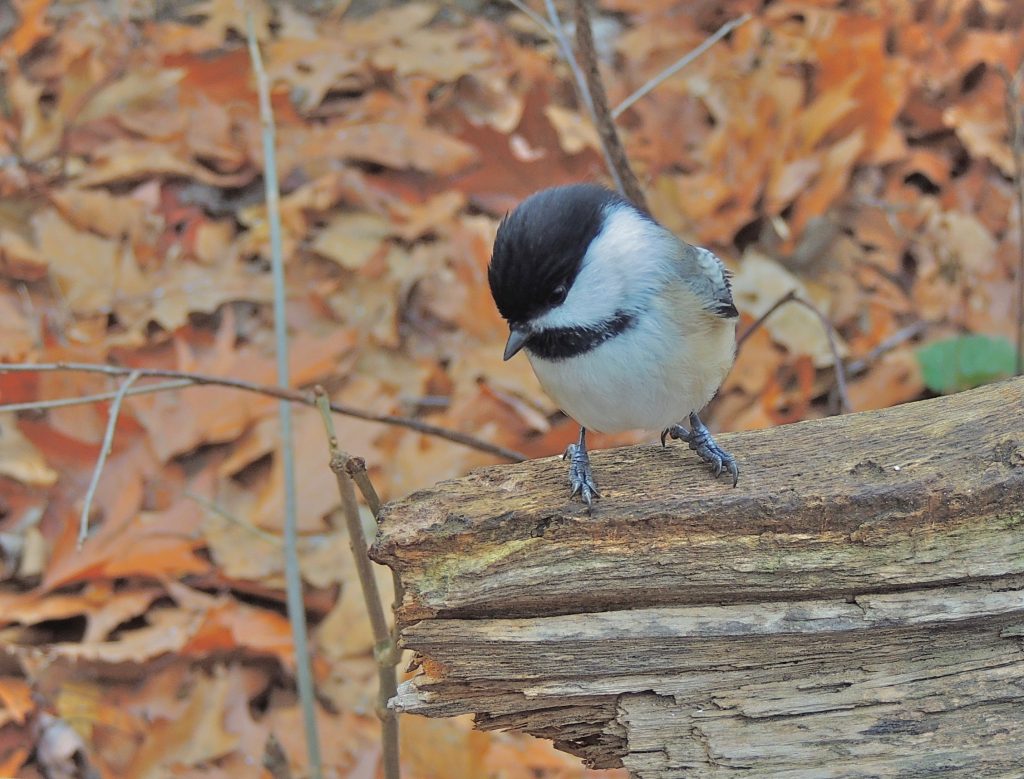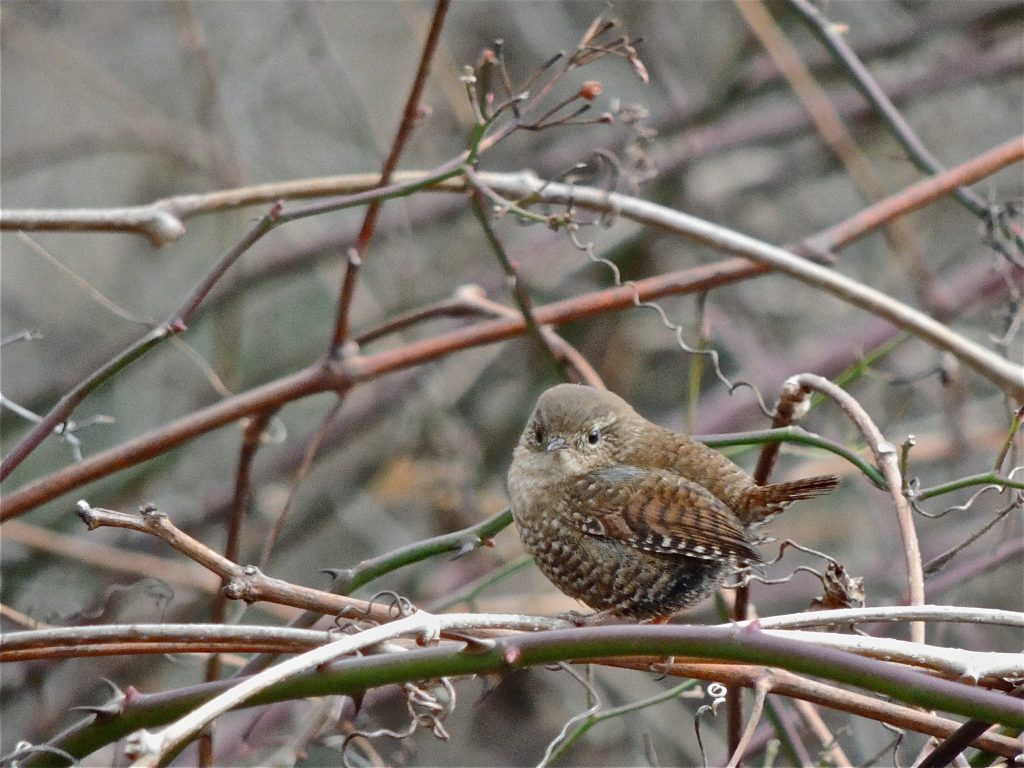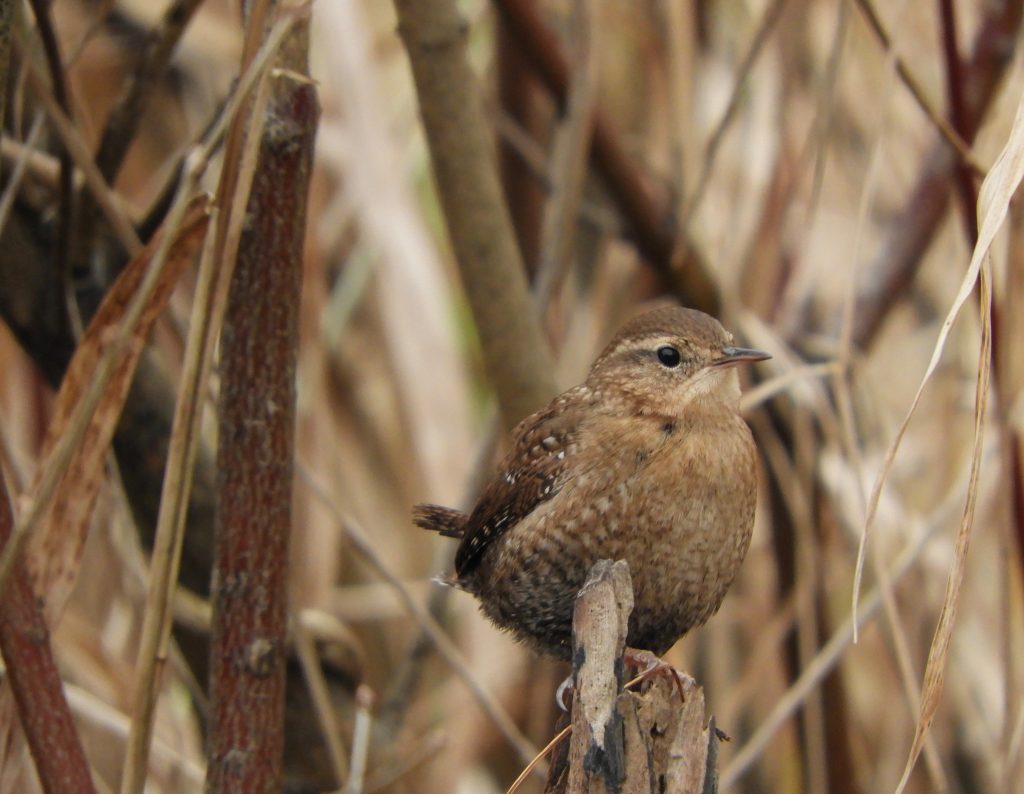November 23 2019. Royal Botanical Gardens Arboretum, Hamilton, ON. Late November and I think we’re left with just the winter hardies, the resident birds who stay all year or winter visitors for whom this is their Florida. The latter class is showing up in increasing numbers, particularly the clouds of so-called Winter Ducks now settling in on Lake Ontario. Land birds too, Blue Jays, Dark-eyed Juncos and Winter Wrens. We see Blue Jays twelve months of the year but I’m pretty sure our jays of winter are visitors from somewhere north of Lake Superior while our jays of summer come here to breed but avoid northern winters. The southbound Blue Jay migration in mid-October is a spectacle, furious and at times noisy.
On this day I joined a group of new birders who were participants in an Introduction to Birding class. We walked a familiar trail and the group was happily absorbed discussing the defining features of Black-capped Chickadees, Red–bellied Woodpeckers and Herring Gulls; it was pretty much as expected.

At a pause, we could hear the coarse churrs of what, at first, I thought was a Carolina Wren, but it turned out to be a Winter Wren staying low and investigating a dark tree-root cavity, almost a mini-cave. We watched it for a while and while Winter Wrens are hardly the sort of spectacular bird you’d expect to captivate a novice birder, it held the attention of a straggling half of the group.
A little later another Winter Wren approached the group and without hesitation made its way to the top of a conspicuous sapling to give everyone a lingering view and plenty of time to discuss field marks.

Winter Wrens were easily Birds of the Day for me although a Belted Kingfisher might have been of more interest to others. But to go back to the first wren, the one investigating a mini-cave, it reminded me of the species’ scientific name Troglodytes hiemalis, which from the Greek and Latin, means winter cave-dweller.
